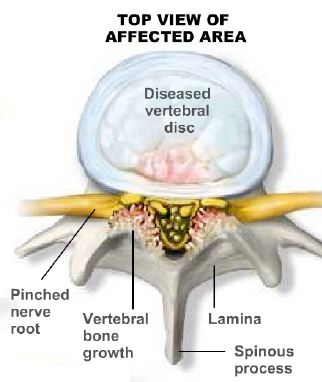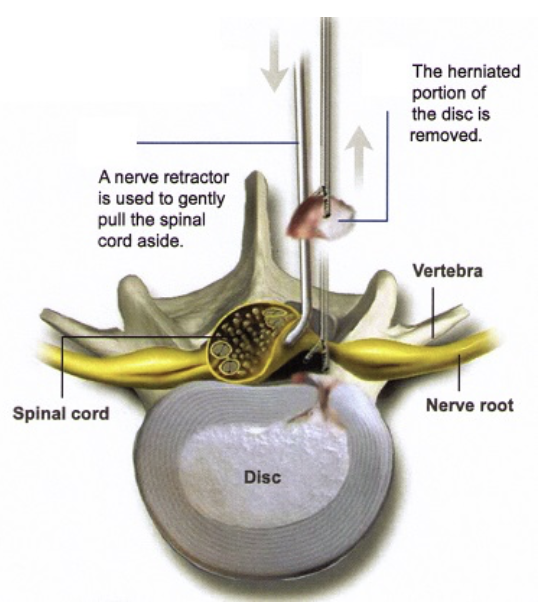Lumbar Laminectomy
Lumbar Laminectomy
Lumbar laminectomy is a minimally invasive surgical procedure to remove bony pressure on the spinal canal and spinal nerves to relieve buttock, hip and leg pain. Occasionally disc material needs to be removed.
Advantages of Lumbar Laminectomy
- Outpatient in Most Cases
- Small Incision - Often one inch or less
- Minimal Blood Loss
- Quick Recovery - Back to work in days and sports in 6 weeks
If You Have Decided to Have Surgery:

- Call Dr. Jeffords’ staff to schedule your surgery date and the date for your pre-operative consultation.
- At your pre-operative consultation Dr. Jeffords or his P.A. will discuss the procedure with you, answer any questions you may have, and have you sign a consent form for surgery.
- You will be given prescriptions for pain medicine and instructions for post-operative care.
- Your pre-operative evaluation at Resurgens Surgery Center or the hospital will be scheduled on the same day as your pre-operative consultation. You will have a chest X-ray, EKG, and blood-work performed.
- You will check into the Resurgens Surgery Center or the hospital the morning of surgery.
Surgical Procedure:
- Your anesthesiologist will bring you to the operating room and put you to sleep for the operation.
- There are usually two nurses in the room and a surgical assistant that assists Dr. Jeffords with the operation.
- An incision is made in middle of your lower back. The length depends on the number of levels to be decompressed.
- After carefully moving the muscle tissue, a retractor is placed to expose the back of the spine.
- Bone and ligament that are causing pressure on the spinal canal are removed.


- If a discectomy is performed, the pinched nerve is gently moved to the side and the bulging or herniated disc material is removed from underneath the nerve.

- The incision is closed with resorbable stitches that are placed beneath the skin.
- The surgery will take approximately 1 hour, or more depending on the number of levels.
After Surgery:
- You will be taken to the recovery room (PACU) and stay there for about 1-1 ½ hours.
- Dr. Jeffords will speak to your family while you are in the recovery room.
- The nurses will get you out of bed shortly after surgery and the physical therapists will work with you to ensure that you are strong enough to walk and climb stairs..
- Most patients go home the day of surgery, typically within 1-2 hours. Occasionally, some patients will stay overnight.
- You will be able to ride in a car or plane upon leaving the hospital or surgery center.
After Going Home:
- You will be given pain medication and a muscle relaxant to help control post-operative pain and spasms. Make sure you do not drive or operate heavy machinery while on the medication.
- The surgical dressing is waterproof and you may shower over it starting the 2nd morning after surgery. This dressing will stay on for 7 days and then you will remove it.
- There will be some activity restrictions that you will need to follow. For the first six weeks, no significant bending or twisting at the waist, and no heavy lifting.
- You may drive once you are off of your medications (generally at about 3-5 days).
- You can expect to return to sedentary office or desk-work approximately 3-5 days after surgery.
- You will start a rehabilitation program with the physical therapist 2 weeks after surgery.
- If you perform manual labor that requires heavy lifting or frequent bending or climbing you should wait 6 weeks before returning to this activity.
- Sports activities such as running, golf, or tennis may be resumed at 6 weeks.
